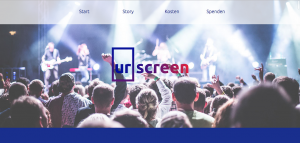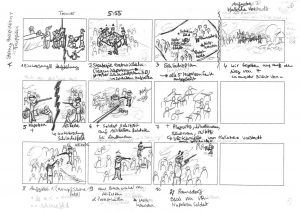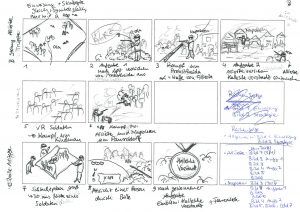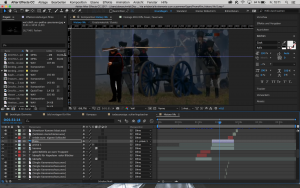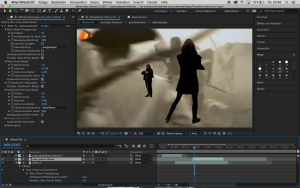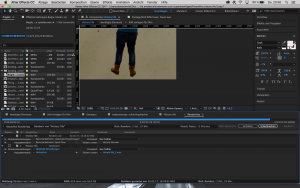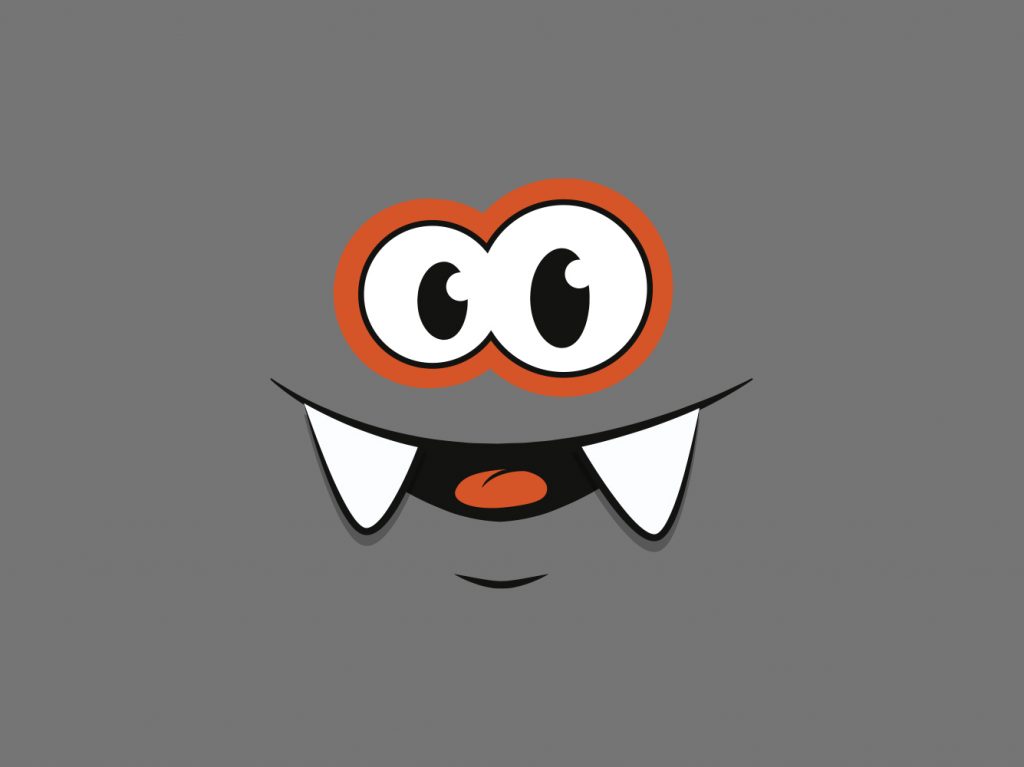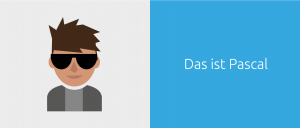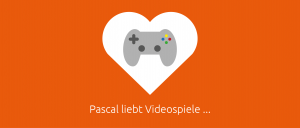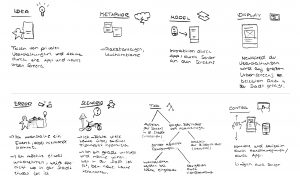Die Elemente gehen in die zweite Runde. Alle werden weiter bearbeitet, optimiert und auf eine Hololensbrille angewendet. Dafür suchte ich mir verschiedene Bilder der Hololens aus, um die Perspektive auszunutzen. Danach wird in einem weiteren Punkt die Kommunikation untersucht. Also Los geht´s.
Der Anfang der Elemente macht heute wieder der Schlachtplan für den 18.10.1813, den dritten Schlachttag. Wenn alle Elemente auf der Karte aktiviert sind wirkt sie voll, doch der Spieler sieht sie nicht unbedingt in ihrer ganzen Pracht, denn der User kann auswählen was er sehen will. Wie? Ganz einfach. Der User kann sagen, ich möchte wissen wo meine Verbündeten sind, er kann auch sagen welchen Verbündeten er sehen möchte, da dieser nach Hilfe fragte. Die Gebäude, der Baum und der Kolmberg dienen für den Spieler als Orientierungspunkte. Der Nutzer sieht folglich, nur den Punkt, den er zu sehen braucht und kann zu seinen VR-Mitspielern sagen: »Geht zur Mühle. Das ist der Ort Hallesche Vorstadt und stört die napoleonischen Kämpfer.« Mhmmm, und wie wird das Netz weniger, damit es nicht so aussieht als ob die Brille einen Sprung hat? Um die Wege auf der Karte übersichtlich zu halten, verwendete ich die wichtigsten Wege, auf denen der Nutzer sich bewegt. Dennoch sind es viele Wege, daher bauen die Wege auf denen der User sich bewegt auf. Somit sehe ich nur den Teil der Wege, welchen ich brauch. Aber wie kann ich dann meinen Verbündeten Hilfe aussenden? Wenn ich dies machen möchte, sehe ich die Wege auf denen ich mich und mein in Not geratener Verbündeter bewegen.

Die Karte mit ihren historisch korrekten Orientierungspunkten.
Ein weiteres Element zur Orientierung stellt der Kompass dar. Dieser soll perspektivisch gezeigt werden, so als ob man ihn schräg in der Hand hält. Darüber hinaus soll er einfach sein, aussehen wie 200 Jahre alt und dem User alle nötigen Informationen bieten, damit dieser sich im Raum und durch die Welt (dem Schlachtfeld der Völkerschlacht) bewegen kann. Dazu gehört die Frage: Wie bewegt sich der User überhaupt im Raum? Wenn der User drei Schritte im realen Leben macht, bewegt sich der Kämpfer in der Hololensaanwendung 300 m weiter (nach vorne, links, rechts oder rückwärts). Darüber hinaus wird unterschieden zwischen den Schritten beim Kampf und denen beim Schleichen durch die Dörfer und Schlachtfelder. Den Unterschied erkennt der Computer, durch das anlegen der Waffen.
Nun zu einem anderen Element. Als nächstes folgt die Lebens- und die Todesanzeige. Was passt am besten zu dem Tod? Natürlich der Schierlingsbecher. Nach dem Becher folgt eine Anzeige in Form von Zahlen. Diese zeigen die Tode am jeweiligen Schlachttag, die Tode in der gesamten Schlacht und die Tode in den eigenen Reihen (Verbündete). Das Leben ist wertvoll, vor allem in so einer wichtigen Schlacht, wo alle Lebenden Krieger benötigt werden. Daher wird das Leben durch drei glänzende auf der Seite liegende Diamanten dargestellt. Wenn man schwer verletzt wird (fast schon tödlich), verliert man einen Diamanten (ein Leben). Wenn dies dreimal passiert, ist der Spieler Tod und er hat die Schlacht um seine Stellung (den Ort den er verteidigen oder einnehemen soll) verloren. Man hat die Möglichkeit ein neues Leben zu erhalten, wenn man die Schlacht um seine Stellung gewinnt. Dennoch: wenn alle Verbündeten aus einem Team sterben, ist die Völkerschlacht verloren und wenn Napoleonspieler schlau sind, können diese auch einmal in ihrem Leben die Völkerschlacht gewinnen. Die Anzeige des Lebens wird im Himmel angezeigt, folglich schaut der Spieler hinauf und die Todesanzeige ist auf den Boten zu finden, da es um die Gefallenen geht.

Die Lebensanzeige.

Der Schierlingsbecher einmal in groß.

Der Schierlingsbecher mit der Todesanzeige.
Als eine kleine Belohnung, erhält man nach dem Gewinn einer Teilschlacht ein Emblem. In den folgenden Bildern sind die Emblems für den 18.10.1813 gezeigt. (PS: Die Emblems folgen im laufe der nächsten Wochen :D)
Nach den Elementen, betrachte ich die Kommunikation genauer. Hier untersuche ich mögliche Ideen, wie der User die Elemente auswählen, vergrößern, verkleinern und Hilfe aussenden kann. Dies ist vom Spieler hauptsächlich Sprachgesteuert. Kein Witz, denn der Regisseur hört alles mit, hat die Kontrolle über alle Knöpfe im Regieraum und den Computer, natürlich gehört dann das zuhören und darauf reagieren auch zu seinen Aufgaben. Der User hat einige Befehle in seinem Vokabular auf denen der Mann aus der Regie reagiert und Knöpfchen drückt. Dazu gehöhren die Worte Hilfe!, Ich helfe, mehr Mann, Angriff und Rückzug.
Der User selbst kann steuern was er sehen will: Wenn er in den Himmel schaut sieht er seine Lebensanzeige, wenn er auf den Boten schaut die Gefallenenanzeige und den Schlachtplan sieht er, wenn er seinen Blick nach weit Links oder Rechts richtet, da er auch so die Orientierungspunkte auf dem Schlachtfeld sieht, damit er weiß vor welchem Dorf er sich befindet. Der Kompass wird nur beim Laufen durch die Schlachtfelder neben den Schlachtplan angezeigt und sonst hat der Nutzer die Möglichkeit diesen anzuzeigen, wenn er die Hand offen ausstreckt so als ob dieser sich in echt auf der Hand befindet. Die Elemente kann der Nutzer durch das aufklappen von aufeinander gedrückten Daumen und Zeigefinger vergrößern und das schließen dessen verkleinert die Elemente wieder.
Der Artikel Alles für die Elemente: Runde 2 hat die Lizenz CC-BY-NC-4.0 CLIC, bzw. des jeweiligen Autors.
